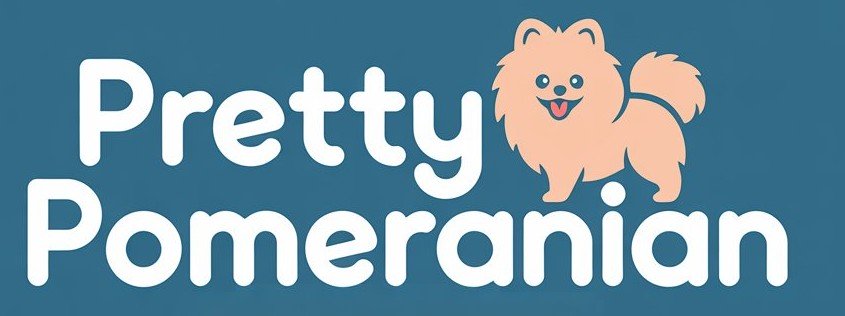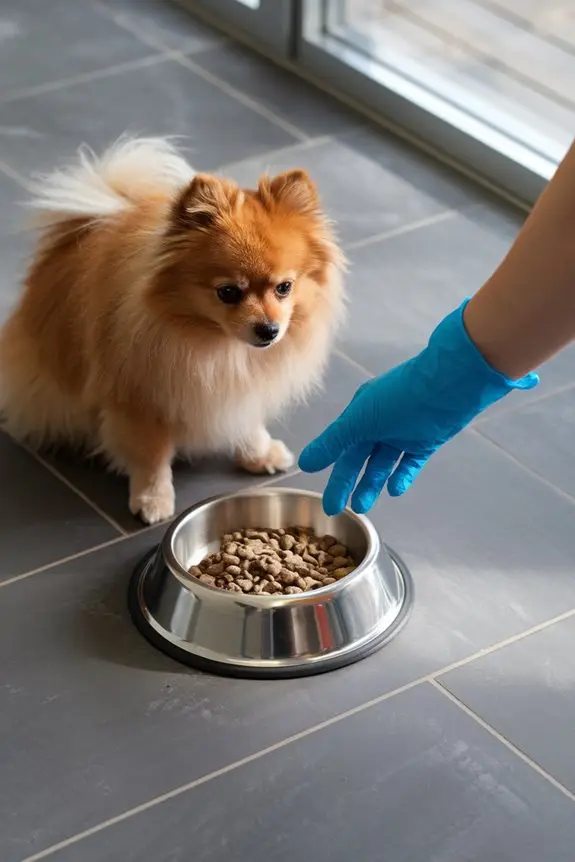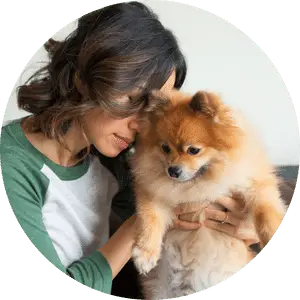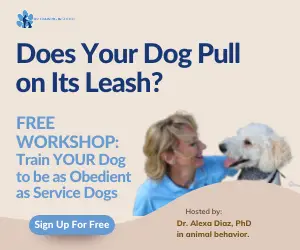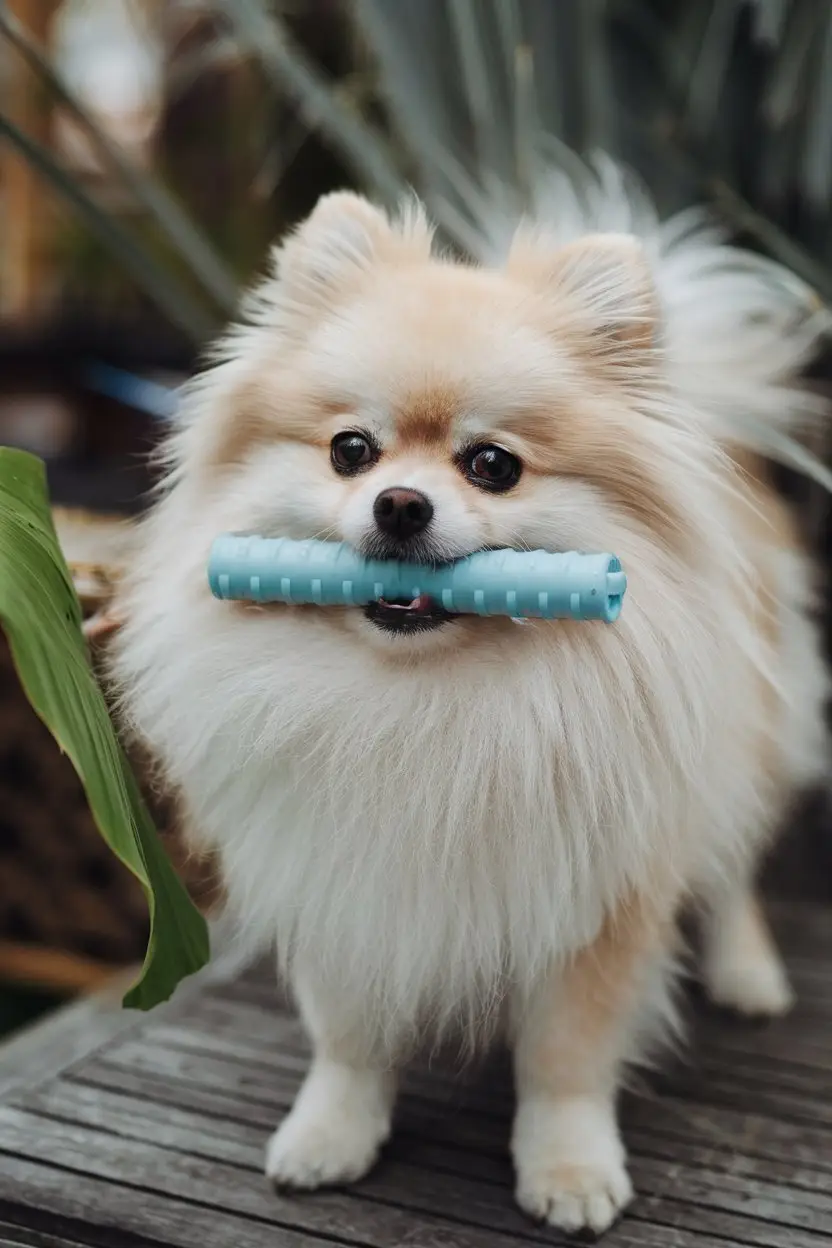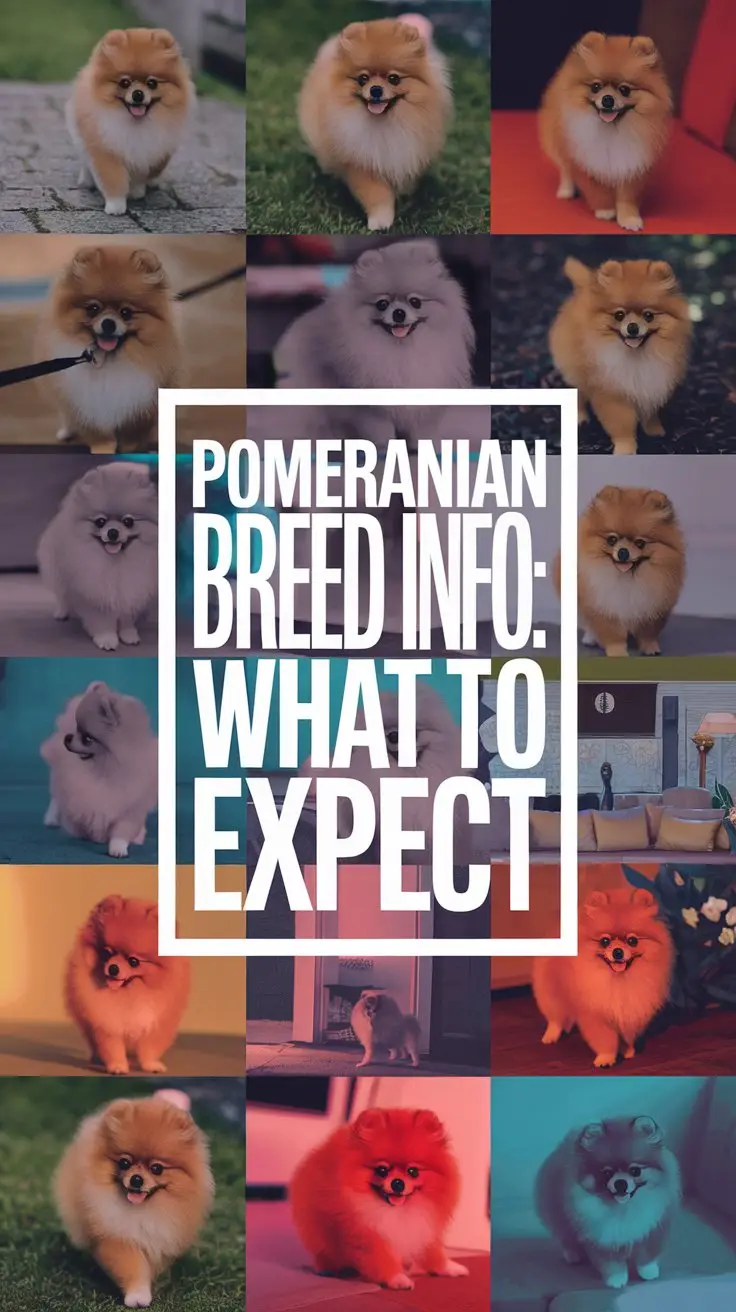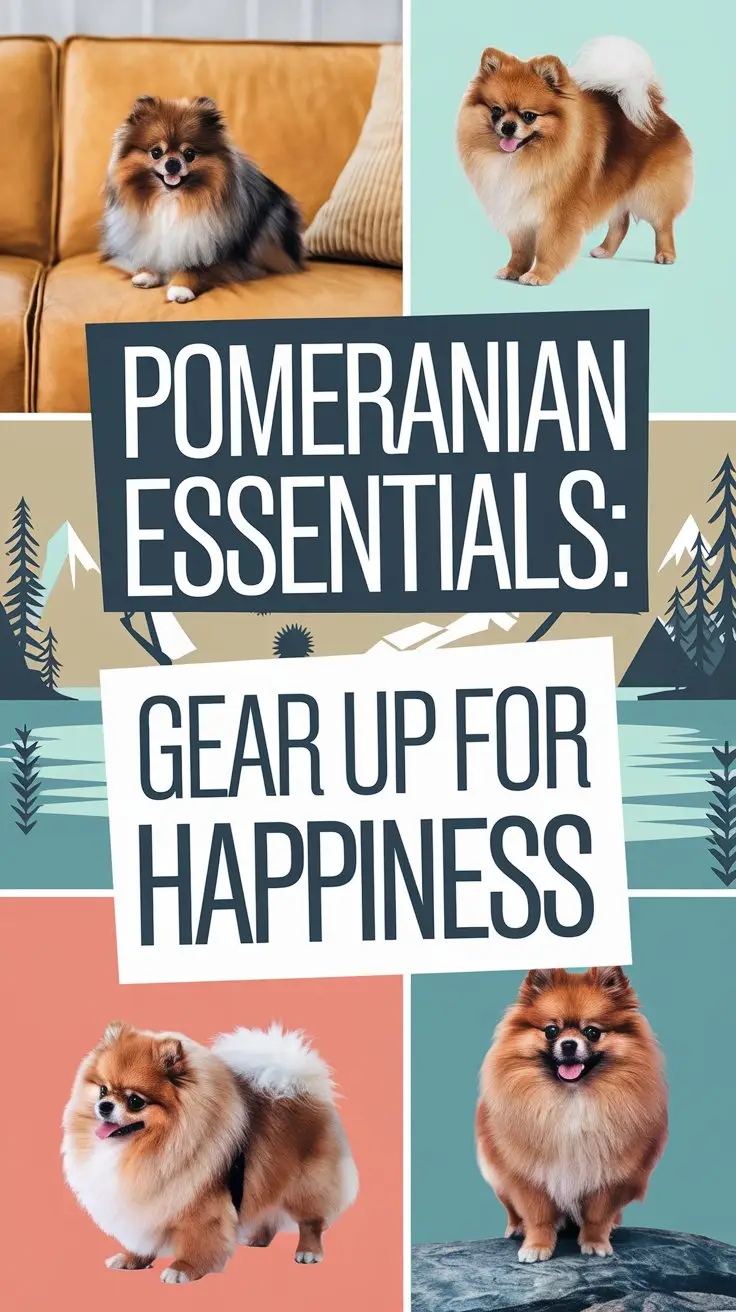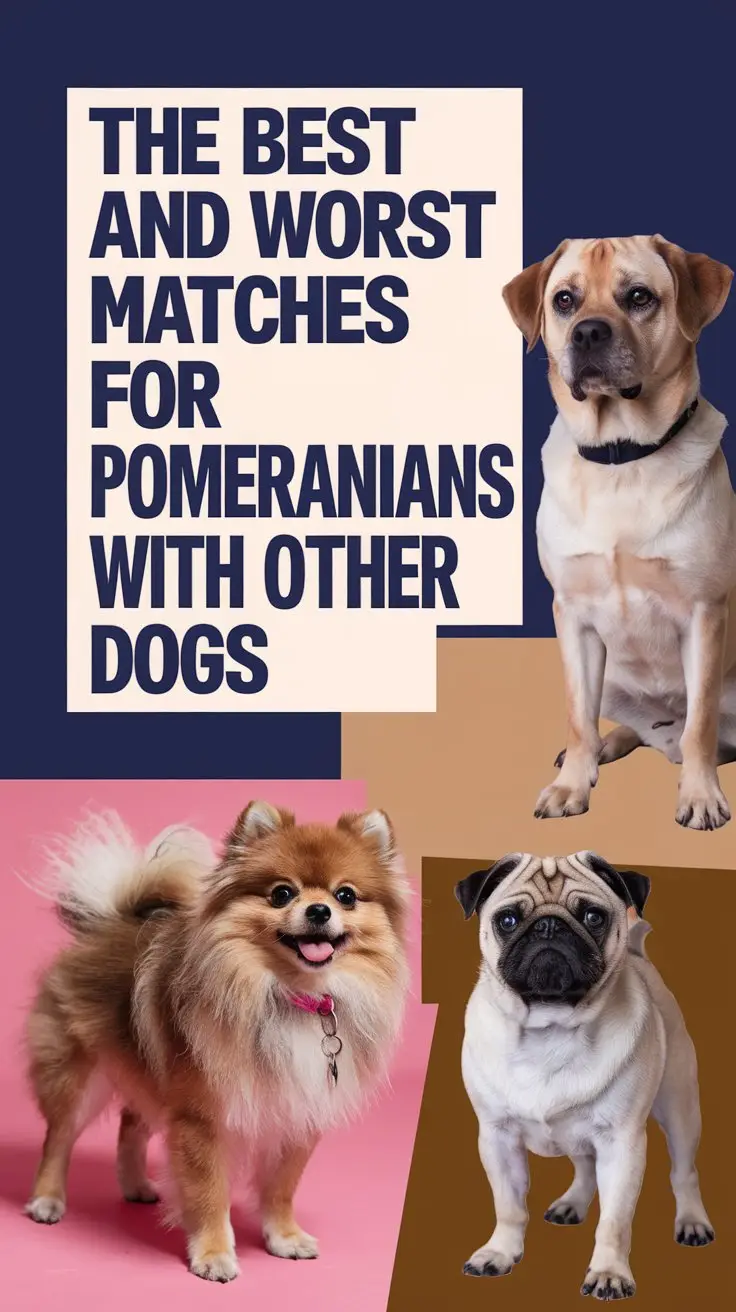Dealing with your Pom’s food aggression isn’t as tough as it seems! First, watch out for signs like growling, getting stiff, or wolfing down food super fast during meal times. Pick a nice, quiet spot for them to eat, and make it a happy experience with lots of praise and treats.
Try feeding them from your hand, and slowly get them used to having you nearby while they munch away – yummy treats help a lot with this! Keep an eye on them during meals, use a gentle voice, and make sure kids stay away from your pup’s food bowl.
If your Pom’s still being aggressive about food after trying these tricks, it’s totally okay to reach out to a dog trainer for extra help. Getting the hang of food aggression takes time, but with patience, you’ll help your fluffy friend feel more relaxed about eating.
Understanding Food Aggression Basics
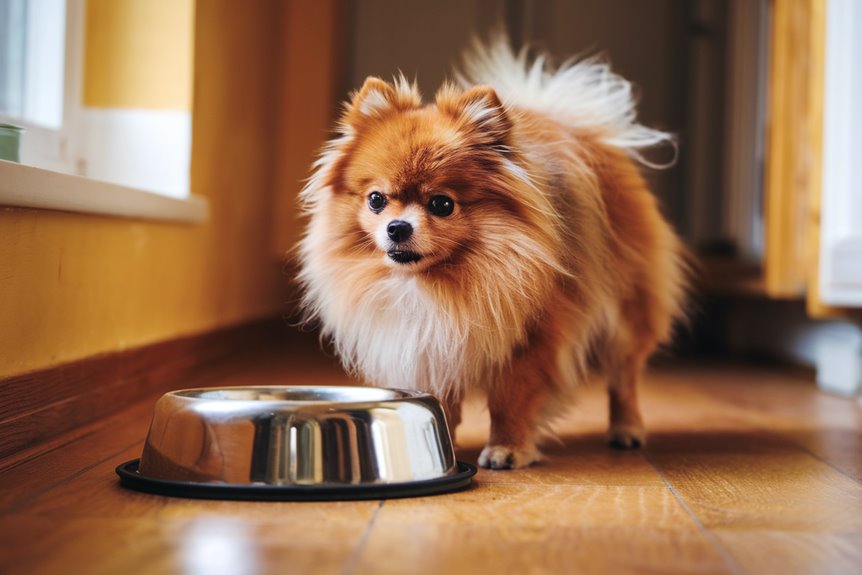
Food aggression in Poms is pretty messy stuff – it comes from a mix of what they’re born with, how they grow up, and what they learn along the way. If you don’t deal with it, things can get really dicey. Your little fluffball might start with just a growl here and there, but it can ramp up to some serious biting if you’re not careful.
Getting a handle on why your Pom acts this way around food makes it way easier to fix. Some of these little guys are naturally more protective of their food bowl, while others pick up bad habits from rough experiences or just not being around other dogs enough when they were puppies. Positive reinforcement training is essential for correcting these behaviors effectively.
You might catch them getting all stiff, showing their teeth, or going nuts over their toys and other stuff they love. Maybe they’d it rough in a shelter, or didn’t get enough food before – whatever the reason, spotting these signs early means you can jump in with the right training before it gets out of hand.
Spotting Warning Signs
You can protect your Pom and everyone else by learning to spot when food problems might happen. Just keep an eye out during meals and notice what gets your pup worked up – it makes a huge difference!
Look for little things, like when your Pom gets stiff, growls, or freezes up if someone gets near their bowl. They might act super protective by standing guard over their food or making warning noises.
Some dogs just give a heads-up with barks or defensive poses, but others might actually lunge, snap, or try to bite.
Keep tabs on the small stuff too – things like wolfing down food super fast, not looking at you, or getting all tense around their meals.
When you catch these early signs, you can jump in and fix things before your pup gets really aggressive about their food.
Using positive reinforcement techniques rather than punishment is crucial when addressing food-related behavioral issues.
Prevention and Safety Tips
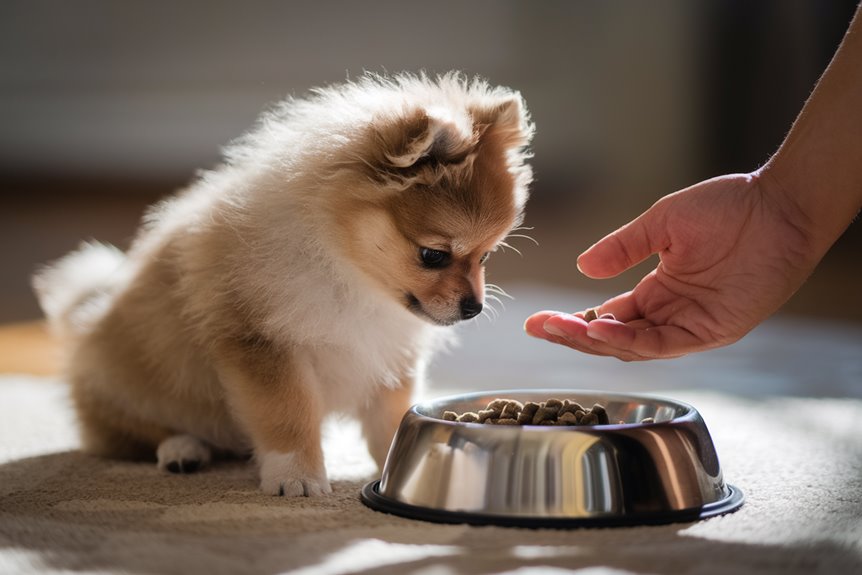
Feed your pup safely by sticking around during meals and talking calmly to them while they eat – this shows them no one’s gonna steal their food.
Get them used to you being nearby by hand-feeding them sometimes and lightly touching their bowl without moving it.
Pick a quiet spot where your Pom can eat in peace without feeling like they need to guard their food.
If you’ve got other pets at home, just pop up some baby gates to keep everyone apart during mealtime.
Make sure to tell your kids that they need to leave your Pom alone when they’re eating.
Give lots of treats and praise when your pup stays relaxed – it helps them see that having you around means good things happen!
If your Pom still gets aggressive about food and things aren’t getting better, it’s totally okay to call in a pro for some extra help.
Training Your Aggressive Pomeranian
Getting your feisty Pom to chill out takes some patience and know-how. Think of it like teaching a tiny, fluffy friend to trust you – it won’t happen overnight, but it’s totally doable!
Start by giving your pup some space during meal times. Just hang out far away while they eat, then slowly get closer as they feel more relaxed about you being there. Toss some super yummy treats near their bowl – this shows them that having you around means extra goodies!
Once they’re more comfortable, try talking to them in a gentle voice and offering food from your hand. This is like telling your little buddy, “See? I’m actually pretty nice to have around during dinner!”
If your Pom is really losing it with the aggressive behavior, it’s totally okay to call in a pro trainer. Just stick with whatever training plan you choose and get excited about the baby steps – even tiny improvements mean you’re heading in the right direction!
Before you know it, your furry friend will be much more relaxed about sharing their space during meals.
Remember to keep training sessions short and engaging to maintain your Pom’s interest and ensure positive progress.
When to Seek Professional Help
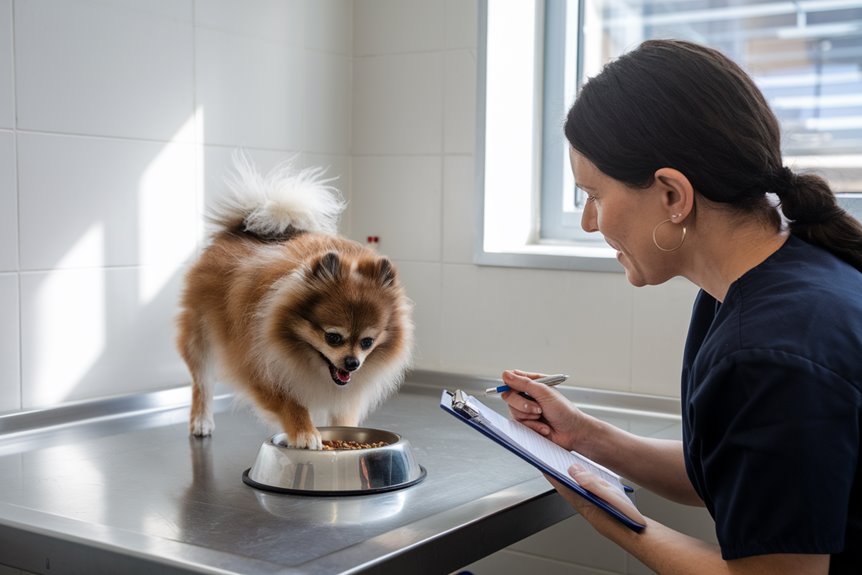
You’ll want to take action when your Pom’s food aggression gets out of hand. If your little buddy is super aggressive during meals, keeps trying to bite family members, or starts acting up outside of food time, it’s definitely time to get some help from the pros.
Watch out if your pup starts getting protective over toys and random stuff, not just food, or if they seem extra nervous in general. These red flags might mean there’s something bigger going on that needs expert help.
If your own training isn’t doing the trick, or if things are getting worse, don’t wait around – get some professional help.
Get in touch with a dog behavior expert and your vet – they can team up to figure out what’s going on. They’ll check if there are any health problems and come up with special tricks to help your Pom chill out and behave better.
Since behavioral changes in Pomeranians can indicate underlying health issues, it’s crucial to rule out medical conditions before addressing the aggression through training alone.
Frequently Asked Questions
Can Food Aggression in Pomeranians Develop Suddenly in Senior Dogs?
Food aggression in your older Pom can pop up out of nowhere – it’s actually pretty common! When they’re getting up there in years, health stuff like pain, brain changes, or other senior doggy problems can make them super protective of their food bowl. They might start acting like little grumps around mealtime even if they’ve never done that before. It’s their way of saying something’s not quite right with them.
Will Feeding My Pomeranian in a Different Room Solve Food Aggression?
Just moving your Pom to another room for meals won’t fix their food aggression. Sure, lots of people try changing where they feed their dogs (about 60% of owners give it a shot!), but it’s not gonna cut it on its own. In fact, this can make things worse since your pup might get even more protective of their “special” eating spot and feel more anxious about their food. You’ll need to tackle this problem differently.
Does Feeding Raw Food Increase the Likelihood of Food Aggression?
Raw food doesn’t actually make your pet aggressive – it’s more about them thinking “this is super special, and it’s all mine!” The thing is, raw meals often feel like a bigger treat to pets than regular kibble, so they might get a bit more protective. It’s not the raw food’s fault – your furry friend is just following their natural urge to keep precious food safe.
Can Medication Help Treat Severe Food Aggression in Pomeranians?
Just like needing two hands to clap, using meds works way better when you mix them with training. Your vet can give you stuff like SSRIs or TCAs, but they’ll help a lot more if you keep up with training your pup at the same time.
Should I Separate Multiple Pomeranians During Feeding if Only One Shows Aggression?
Yep, separating your Poms at mealtime is a smart move, even when just one of them gets a bit cranky. It’s super important to keep things peaceful and make sure everyone can enjoy their food without any drama. This way, all your little fluffballs can munch away feeling safe and relaxed.
